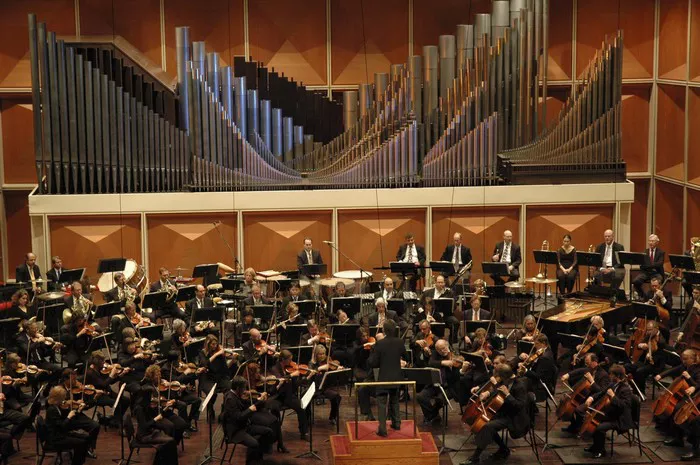Classical music, a genre steeped in tradition and grandeur, boasts a rich history of innovation and creativity. Among the many elements that have contributed to its enduring appeal, one of the most distinctive is the use of cannons. These explosive devices, both literal and metaphorical, have played a crucial role in shaping classical compositions throughout history. In this article, we will embark on a musical journey through time, exploring the profound impact of cannons in classical music.
The Boom of Orchestration: A Cannon in Every Ensemble
In the world of classical music, orchestration is a fundamental aspect. It involves the art of arranging and organizing instruments within an ensemble to create a harmonious and captivating musical experience. Much like a well-executed military strategy, orchestration requires careful planning and precise execution.
Classical composers, such as Ludwig van Beethoven and Pyotr Ilyich Tchaikovsky, were virtuosos in the art of orchestration. They strategically placed different instrumental sections, like cannon placements on a battlefield, to achieve the desired emotional impact. Beethoven’s Ninth Symphony, for instance, showcases a powerful cannonade of sound in the final movement, creating a triumphant crescendo that resonates with listeners to this day.
Harmony and Conflict: The Battle Within Classical Music
Classical music is not just about melodies and harmonies; it often delves deep into the human psyche, exploring themes of conflict and resolution. The tension and release within a classical composition can be likened to the ebb and flow of a battle, with cannons serving as the ultimate exclamation points.
One of the most iconic examples of this is found in Pyotr Ilyich Tchaikovsky’s “1812 Overture.” This masterpiece transports listeners to the heart of a historical battle, complete with cannon fire and triumphant melodies. Through the combination of classical instruments and literal cannons, Tchaikovsky creates a sensory experience that captures the essence of a battlefield, leaving an indelible mark on classical music history.
A Sonic Arsenal: Cannon Percussion Instruments
The cannon’s influence in classical music extends beyond mere symbolism. Composers have ingeniously incorporated cannon-like sounds into their compositions through the use of percussion instruments. The cannon as a musical instrument adds depth and intensity to classical pieces, much like the way it added firepower to historical conflicts.
Classical composers often employed instruments like the bass drum and timpani to simulate the thunderous roar of cannons. These percussive elements punctuate compositions, providing a visceral experience for audiences. When expertly executed by skilled percussionists, the effect is akin to a synchronized artillery barrage, elevating the emotional impact of the music.
Cannons as Metaphors: Symbolism in Classical Music
While cannons are a powerful element in classical music, they also serve as potent metaphors. The idea of cannons firing can symbolize a range of emotions and concepts, from love and passion to conflict and struggle. Composers have used this symbolism to infuse depth and meaning into their works.
In Wolfgang Amadeus Mozart’s “The Marriage of Figaro,” the overture begins with a series of rapid and forceful chords that resemble cannon shots. These “cannon shots” convey a sense of urgency and anticipation, setting the stage for the operatic drama that unfolds. Here, the cannon is a symbol of the impending clash of emotions and desires that drives the plot forward.
Revolutionary Rhythms: Classical Music in the Age of Cannons
The use of cannons in classical music often reflects the historical context of the time. The late 18th and early 19th centuries, known for their political upheavals and revolutions, witnessed a surge in compositions that incorporated cannon-inspired elements.
Ludwig van Beethoven’s “Wellington’s Victory” is a prime example of how cannons became intertwined with the zeitgeist of the era. Commissioned to celebrate the Duke of Wellington’s victory over Napoleon at the Battle of Vitoria, this composition includes the thunderous sound of cannons, creating a sonic representation of the battle itself. Classical music, with its cannons, became a medium through which the triumphs and tribulations of a tumultuous era were immortalized.
The Modern Symphony: Cannons in Contemporary Classical Music
As classical music evolved through the 20th century and into the 21st century, composers continued to find innovative ways to incorporate cannons into their compositions. With advancements in technology and instrumentation, the cannon’s influence has expanded to include electronic and synthesized sounds, allowing for even greater creative expression.
Contemporary composers like John Williams, known for his iconic film scores, have harnessed the power of cannons to create memorable cinematic moments. In his score for “Star Wars,” the booming percussion and brass sections mimic the sound of cannons, amplifying the epic scale of the story.
The Echoes of Cannons: Classical Music’s Enduring Legacy
Classical music, with its cannons both literal and metaphorical, has left an indelible mark on the world of music. Its ability to convey emotion, tell stories, and capture the human experience through orchestrated cannonades of sound continues to captivate audiences across the globe.
From the cannon fire of Tchaikovsky to the symbolic cannon shots of Mozart, classical music has harnessed the power of cannons to elevate the art form to new heights. It reminds us that music, like a well-placed cannon in a symphony orchestra, can be a force of both beauty and power, capable of resonating with the human soul in profound ways.
In conclusion, classical music, with its cannons both literal and symbolic, has proven to be a timeless and evocative art form. Whether it’s the thunderous percussion of a bass drum or the metaphorical cannon shots that convey emotional conflict, the use of cannons in classical music has enriched the genre, leaving an enduring legacy that continues to inspire and awe. So, the next time you listen to a classical composition, pay attention to the cannons, for they are not merely instruments of war but instruments of harmony, weaving their explosive magic into the fabric of classical music’s storied history.

